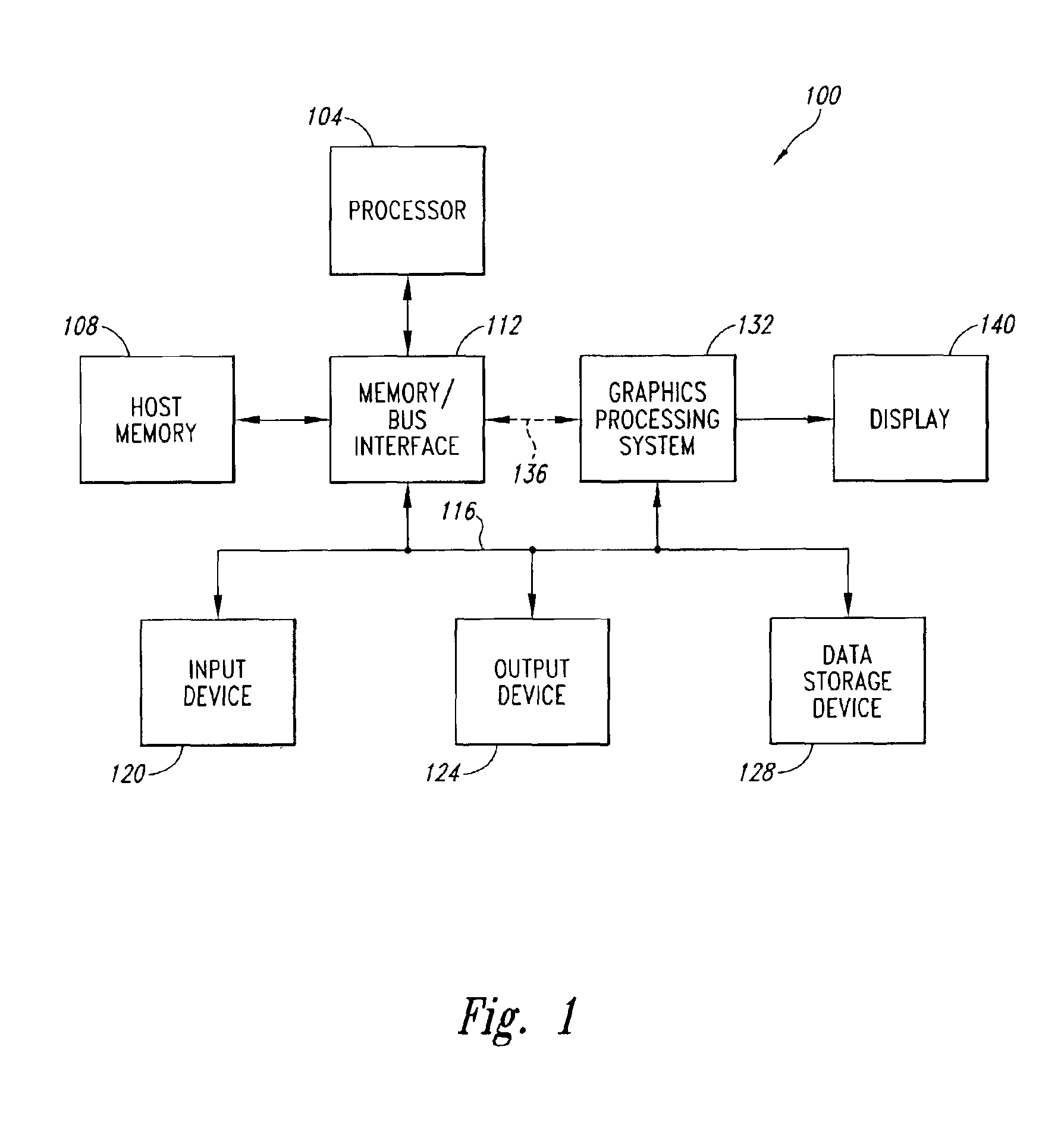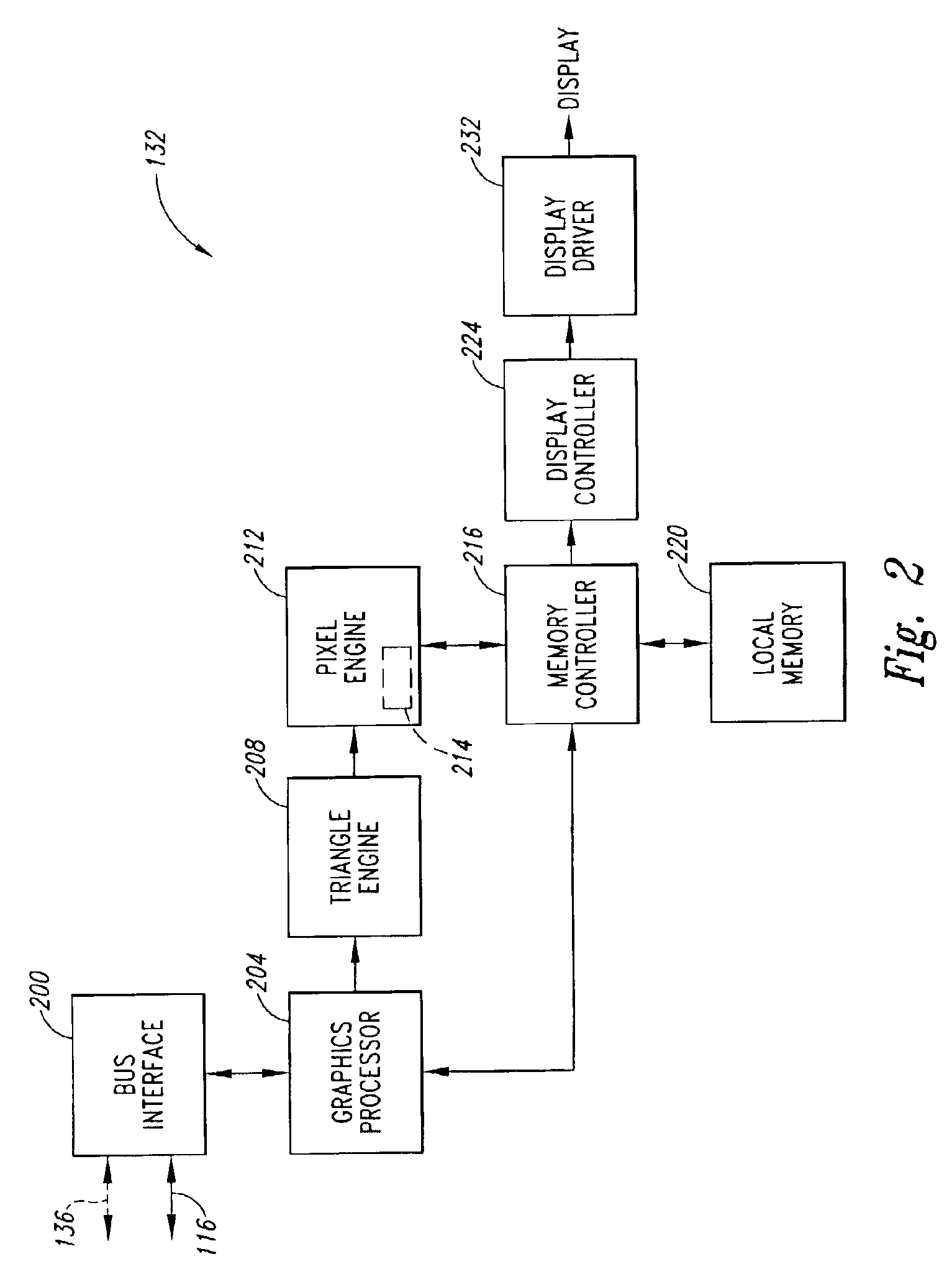Full-scene anti-aliasing method and system
a full-scene and anti-aliasing technology, applied in the field of sampled imagery, can solve the problems of reducing the quality of sampled images, and creating motion artifacts, so as to minimize aliasing
- Summary
- Abstract
- Description
- Claims
- Application Information
AI Technical Summary
Benefits of technology
Problems solved by technology
Method used
Image
Examples
Embodiment Construction
[0019]Embodiments of the present invention render anti-aliased images while reducing artifacts in static images and / or in motion / animation. The systems and methods described herein rasterize a scene at an angle and apply the pixel values from the rasterization to a polygon rendered at the inverse of the angle at which the scene was first rasterized. Embodiments of the invention may be called “rotate-unrotate” rendering. It will be appreciated that the terms “pixel,”“pixel value,” and “value” will be used herein interchangeably. When the terms are to convey different meanings, it will be apparent from the context. Certain details are set forth below to provide a sufficient understanding of the invention. However, it will be clear to one skilled in the art that the invention may be practiced without these particular details. In other instances, well-known circuits, control signals, timing protocols, and software operations have not been shown in detail in order to avoid unnecessarily ...
PUM
 Login to View More
Login to View More Abstract
Description
Claims
Application Information
 Login to View More
Login to View More - R&D
- Intellectual Property
- Life Sciences
- Materials
- Tech Scout
- Unparalleled Data Quality
- Higher Quality Content
- 60% Fewer Hallucinations
Browse by: Latest US Patents, China's latest patents, Technical Efficacy Thesaurus, Application Domain, Technology Topic, Popular Technical Reports.
© 2025 PatSnap. All rights reserved.Legal|Privacy policy|Modern Slavery Act Transparency Statement|Sitemap|About US| Contact US: help@patsnap.com



